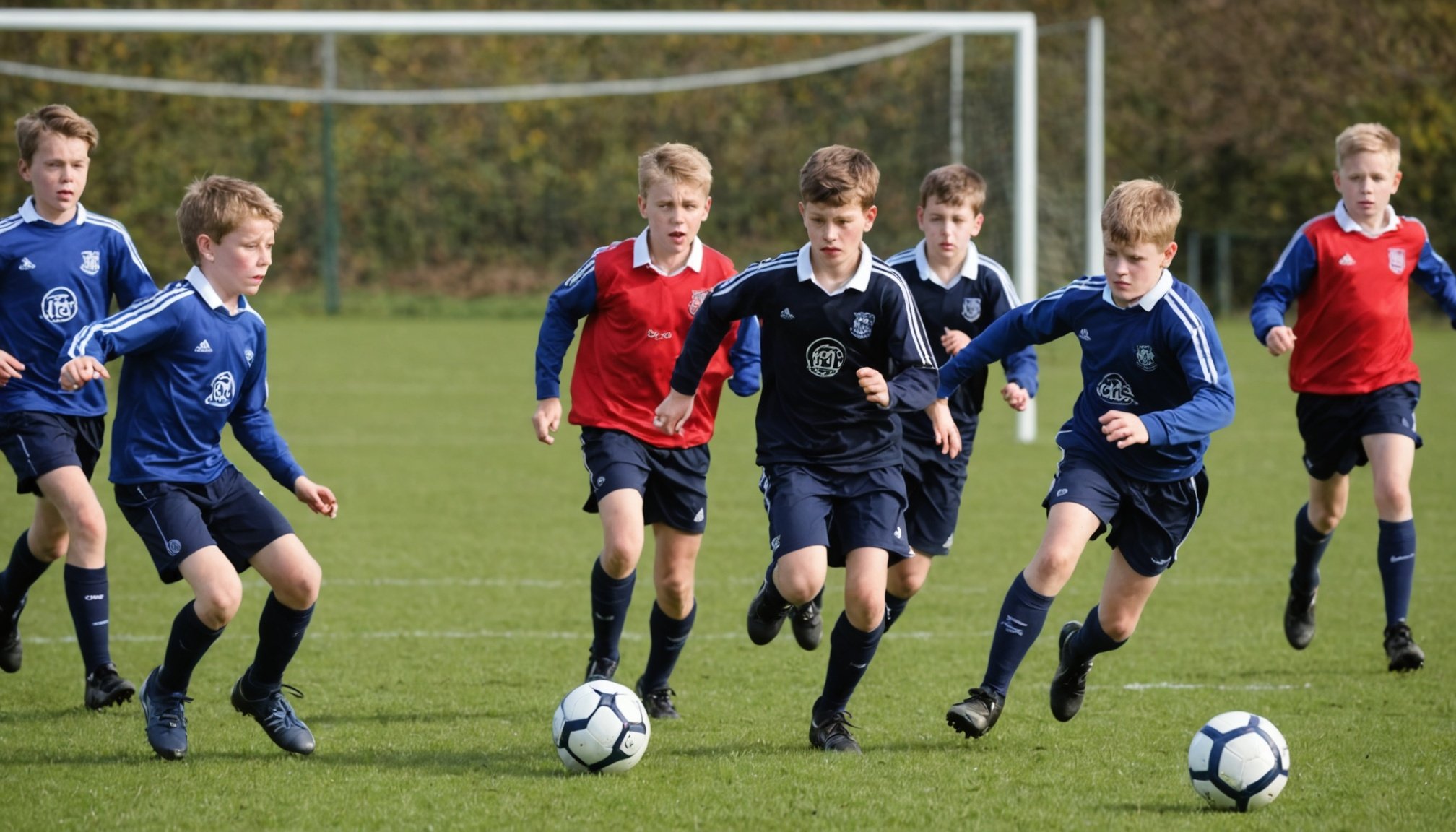Understanding Non-Mainstream Sports in UK Schools
What counts as non-mainstream sports?
Non-mainstream sports refer to activities that fall outside the traditional focus areas such as football, rugby, cricket, and tennis, which dominate UK school sport programs. Examples include ultimate frisbee, archery, fencing, or climbing. These sports often have lower visibility but offer unique physical, social, and cognitive benefits.
Have you seen this : What challenges do niche sports face in gaining recognition in the UK?
Non-mainstream sports differ from mainstream ones primarily by participation rates, historical popularity, and cultural prominence. While football and rugby attract the majority of students and resources, non-mainstream sports usually cater to niche interests but can foster inclusivity and diverse skill development.
In many UK schools, non-mainstream sports programs exist but remain limited in scale and awareness. Schools tend to prioritize familiar sports due to factors like coaching availability and competition structures. However, expanding non-mainstream sports exposure can support student engagement, especially for those who do not connect with traditional options.
Topic to read : How Can Lesser-Known Sports in the UK Gain More Popularity and Recognition?
Understanding this differentiation helps educators and policymakers appreciate the evolving landscape of sports education. Embracing non-mainstream sports could enrich the overall school experience by providing varied opportunities that accommodate diverse student preferences and talents.
Benefits of Including Non-Mainstream Sports
Including non-mainstream sports in school programs significantly boosts student engagement by offering fresh, diverse activities beyond the usual options. These sports attract students who might feel excluded or uninterested in traditional team games, fostering inclusivity and a sense of belonging. When students find activities that resonate with their interests, they are more motivated to participate consistently.
Moreover, non-mainstream sports promote a broader range of skill development. Many of these activities emphasize unique physical abilities—such as balance, coordination, or strategic thinking—that differ from mainstream sports. This variety helps students develop well-rounded physical literacy and social skills, improving teamwork and personal confidence in varied environments.
Addressing students’ often overlooked interests through these sports cultivates enthusiasm and helps mitigate dropout rates from physical education. Schools benefit by creating an inclusive atmosphere that recognizes diverse talents and preferences, ultimately enhancing overall student well-being. Introducing non-mainstream sports is a proactive approach to ensure all students find a place to thrive physically and socially in their school community.
Policy Context and UK Curriculum Guidance
The UK curriculum mandates a broad and balanced approach to physical education, emphasizing not only traditional sports but also opportunities for diverse activities. The Department for Education encourages schools to introduce a variety of sports to promote inclusivity and cater to different interests. This includes non-mainstream sports, which can be effectively incorporated within existing PE requirements through flexible planning.
According to current policy, schools must provide students with regular physical activity that fosters physical, social, and emotional development. Although mainstream sports like football and athletics dominate, there is increasing recognition of non-mainstream sports as valuable tools to engage less active students. The Department for Education supports this by allowing teachers to tailor their PE programs to include activities like orienteering, climbing, or dance, aligning with national curriculum goals.
Schools are urged to adopt innovative approaches while ensuring all activities meet health and safety standards. Integrating non-mainstream sports within the UK curriculum can enhance student motivation and participation, providing positive lifelong habits. This flexibility in policy reflects a broader move towards personalized education, valuing diverse skills and interests in physical education.
Strategies for Integrating Non-Mainstream Sports
Integrating non-mainstream sports into school programs requires careful curriculum planning and practical steps. Begin by assessing student interest and available resources. This assessment informs a step-by-step planning process that ensures smooth inclusion in PE classes and extracurricular activities. Start small—introduce a single sport as a trial within physical education, then expand based on student engagement and feedback.
Collaboration with local sports organisations or clubs is crucial. These partners provide expertise, equipment, and sometimes coaching support. Their involvement enriches the experience and helps bridge gaps in school resources. Schools should seek clubs with experience in the sport being introduced to gain practical insights.
Finally, training and support for PE teachers are essential to sustain the program. Non-mainstream sports often require specific skills and knowledge, so professional development ensures that instructors can confidently teach and motivate students. Offering workshops or partnering with experts can build this capacity effectively. These combined efforts create a robust framework for the successful integration of diverse sports into school life.
Real-Life Examples from UK Schools
Delving into case studies reveals numerous UK schools embracing non-mainstream sports with notable success. These school success stories showcase how diverse activities—from ultimate frisbee to fencing—can enhance student engagement and physical fitness. For example, a London-based school reported increased attendance and enthusiasm after introducing a rugby league program, demonstrating a clear impact on student motivation.
Implementing such programs often requires thoughtful planning and collaboration with local sports clubs. These implementation strategies highlight the importance of tailored approaches that reflect the school’s demographics and resources. One Midlands school developed a model incorporating student feedback to select suitable sports, resulting in a sustainable program that boosted inclusivity.
These case studies offer valuable insights for other schools aiming to diversify their sports curriculum. By analyzing these successes, schools can replicate effective methods such as community partnerships, flexible scheduling, and integrating non-mainstream sports into physical education. This practical evidence underscores the benefits of widening sport options beyond traditional choices, ultimately fostering a more engaging and inclusive school environment.
Addressing Challenges and Implementing Solutions
Overcoming barriers such as limited funding, insufficient resources, and gaps in staff expertise is crucial for successful program implementation. These challenges often slow progress, but they can be addressed strategically. For example, prioritizing training ensures staff gain the necessary expertise, enhancing program delivery despite initial setbacks.
Securing targeted funding can be achieved by exploring grants, community partnerships, or reallocating existing budgets. This financial support allows for acquiring essential materials and technologies that might otherwise be unavailable due to resource constraints.
Engaging the entire school community—including students, parents, and staff—plays a vital role in overcoming these barriers. Initiatives such as workshops, open forums, and collaborative planning sessions help build ownership and align goals. When everyone contributes ideas and feedback, solutions become more tailored and effective.
Ultimately, combining focused investments in staff expertise with accessible resources creates a resilient environment. Addressing these challenges head-on not only mitigates obstacles but also fosters a collaborative culture ready to adapt and thrive.
Further Resources and Support for Schools
Finding the right support and resources is essential for schools aiming to enhance their educational environment. Several organisations provide comprehensive guidance and toolkits tailored to meet diverse school needs. These resources often include practical strategies, policy templates, and training modules designed to streamline implementation.
Schools benefit greatly from joining networks where best practices are exchanged regularly. Such collaborative platforms encourage sharing innovative ideas and overcoming common challenges through collective experience. By engaging with peers, schools gain insights that improve their approach and create positive outcomes.
Ongoing support is crucial as educational demands evolve. Government websites frequently update their offerings, ensuring schools have access to current regulations and advice. Subscribing to newsletters or alerts from these bodies keeps educators informed about new initiatives and funding opportunities.
For those seeking more detailed information, extensive further reading is available through specialised publications and educational forums. This well-rounded approach equips schools with the tools they need to navigate challenges effectively and confidently implement improvements.






